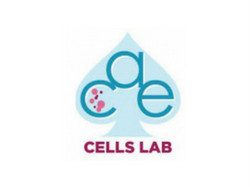Conference Schedule
Day1: August 9, 2018
Keynote Forum

09:30 - 10:15
Biography
Abstract
The importance of endocrinology was augmented after the discovery of the molecular medicine and finding out that all the vital functions in the body are controlled by the hormones extra and intra cellular. Many diseases cannot be repaired without administration of exogenous hormones. The exogenous hormones take away from the body the privilege of the negative feedback mechanism which is a mechanism in out body to control the release of hormones from any gland whenever it reaches certain level in the blood.
This level is different from one patient to the other, this is the cause for which we read in the laboratory investigation reports the normal reference has lower limit and upper limit. Here is the value of the negative feed back that once the level reaches the needed dose by the body the negative feed back makes the gland stop releasing more. Administering exogenous hormone with specific does make the body use some of this dose and the rest hyper stimulate the receptors leading to variety of diseases including malignancy. Using the bio hormonal catalysts help the body to produce the endogenous hormone and does not take away the privilege of the negative feed back.Let us discuss together how we can reach this by using the bio hormonal catalysts and the biological products.
Edward M. Lichten
Wayne State College of Medicine, USA
Title: ANABOLIC STEROIDS IN THE TREATMENT OF DIABETES IN MEN

10:15-11:00
Biography
Dr. Edward Mark Lichten, M.D. has graduated from Ohio State College of Medicine as a Medical Doctor, with the specialty of Obstetrics and Gynecology in1972. Later he was accepted to the Fellowship of the College of Surgeons. He entered private practice in 1976; from there he continue his clinical practrice, medical journal publications and his clinical research. He has presented his research at more than 100 groups of physicians, internationally.
Abstract
Diabetes, the scourge of mankind is an epigenetic, progressive, inflammatory disease that affects 10 percent of the population. Although there are genetic factors, they are minor considering the incidence of diabetes has increased 1000 percent since 1950. What is the key, today, are the unknown (epi-) environmental aspects. Linking xenoestrogens in the environment to both Crohn’s Disease and Endometriosis, the author hypothesizes the correlation exists also in adult onset diabetes in men. The cascade is xenoestrogens cause hormonal disruption of the Hypothalamic-Pituitary-Gonadal Axis resulting in decrease in total testosterone (TT) production. Xenoestrogens increase Sex-hormone-binding globulin (SHBG) further reducing the bioavailable testosterone, measured as the Free Androgen Index(FAI). There are three unique discoveries:
Type I and Type II diabetic men were observed; worsened disease associated with lower FAI. Increased morbidity in the aging population correlates inversely with FAI.
All diabetic men are hypogonadal, parenteral testosterone (not topical testosterone) has only moderate effects on improving glycogenated hemoglobin. Adding androlone deconate was superior to testosterone alone: reducing glycogenated hemoglobin and areas under the curve for glucose and insulin. Addition of a third anabolic steroid further improved all parameters. Hypoglycemia was not a problem even with serum glucose levels under 50mg/dl.
In conclusion, diabetic men are hypogonadal: FAI is the best biomarker measurement. Select anabolic steroids increase FAI, testosterone, decrease SHBG, insulin requirements and maximize glucose homeostasis.. Should physicians measure the FAI, it will serve as a starting point for prescribing anabolic treatments, which can reverse previously unrecognized aspects of adult onset diabetes.
Yasuo Imanishi
Osaka City University, Japan
Title: Hypophosphatemic rickets and osteomalacia: pathogenesis, diagnosis and treatments

11:20-12:05
Biography
Abstract
Chronic hypophosphatemia develops rickets and osteomalacia characterized by impaired mineralization of bone matrix. Rickets, such as X-linked hypophsohatemic rickets (XLH), occurs in childhood before the closure of epiphyseal plate and results in growth retardation and bone deformities. On the other hand, osteomalacia occurs in adulthood with severe muscle weakness and bone pain. Tumor-induced osteomalacia (TIO) is an underrecognized paraneoplastic syndrome presenting with hypophosphatemic osteomalacia, which is one of causes of adult onset osteomalacia. Recently elevated circulated levels of fibroblast growth factor 23 (FGF23) was identified as a cause of hypophosphatemic rickets/osteomalacia such as XLH and TIO. FGF23 is a bone-derived hormone, which regulate phosphate and vitamin D metabolism. Chronic elevation of circulated FGF23 causes hypophosphatemia by urinary phosphate wasting and attenuate activation of vitamin D, resulted in rickets and osteomalacia. Circulating FGF23 measurement is required to obtain proper diagnosis in rickets and osteomalacia. In familial rickets, genetic testing such as PHEX gene is recommended. In TIO, it is difficult to identify the causative tumor, which secrete FGF23. Recently, somatostatin receptor scintigraphy was reported to be useful for the diagnosis and localization of causative tumors. Conventional therapies for these FGF23-induced rickets and osteomalacia are active vitamin D and/or inorganic phosphate, however, the clinical efficacy of these therapies are limited. Burosumab, a monoclonal antibody that targets FGF-23, improved renal tubular phosphate reabsorption, serum phosphate levels, linear growth, physical function and reduced pain in children with XLH. This new antibody is promising treatments not only for XLH but also for TIO.
Tracks
Day2: August 10, 2018
Keynote Forum
Paloma Collado
National University of Distance Education, Madrid, Spain
Title: Modulatory action of estradiol during development on the effects of under and overnutrition in male and female rats

10:00-10:45
Biography
Abstract
During development organisms are more vulnerable to adverse effects that occur both in the internal and external environments, and among the latter, nutrition is a determining factor. It has been widely demonstrated that malnutrition or overnutrition produce long-term alterations generating imbalances in the neurohormonal system that regulates energy metabolism. It is known that estradiol has an inhibitory effect on food intake and that this hormone also has organizing effects on some neural networks during the first stages of life. Recent experiments in rats have shown that estradiol during the first two weeks of life exerts a modulatory function on the alterations produced by malnutrition and overnutrition, and what is more important, that this modulation has differential effects in males and in females in the case of overnutrition. Specifically, a high fat diet seems to alter mainly physiological parameters in males, whereas in females the alterations can be detected in the hypothalamic peptidergic system, concretely in the anorexigenic peptide proopiomelanocortina (POMC). Taking into account the modulatory role of estradiol in the first weeks of life, and that its influence on food intake occurs through the same transcription factor pathway (STAT3) through which leptin exerts its anorexigenic actions on food intake, and also in its neurotrophic function over hypothalamic circuits during development, it will be of great importance to investigate the possible participation of estradiol in the programming of the hypothalamic circuits that regulate energy metabolism.
Harvey Aaron Schwartz
Executive Director, Secretary of the Board, the Ohio University Heritage College of Osteopathic Medicine Graduate Medical Education Consortium.
Title: The Sweet & Sour Disease: Emotionally Managing Diabetes
10:45-11:30
Biography
Abstract
Irina Kurnikova
RUDN University, Russian Federation
Title: Heart rate variability at the stages of carbohydrate metabolism disturbance

11:50-12:35
Biography
Abstract
Methodology & Theoretical Orientation: 112 patients were examined. 1st group - patients with metabolic syndrome (MS) without carb tolerance (CT) (28 people); 2nd group - MS with CT (13 people) and 3rd group - patients with DT2 (71 people). Autonomic regulation was studied by using spectral analysis of daily variability of the heart rhythm (HR) power spectrum of oscillation in three frequency bands: 0.004-0.08 Hz (very low frequency – VLF), 0,09-0,16 Hz (low frequency – LF), 0,17-0,5 Hz (high frequency – HF). In addition, Index of vegetative balanced (IVB), IC (index of centralization) were analyzed. Findings: A decrease IVB (LF/HF) was observed in patients with MS (0.6±0.1). At the same time, a signifi cant difference in groups 2 and 3 (p<0.05) was found, which underlines the importance of the stages of CMD. Evaluation of spectral analysis revealed a significant increase of ULF% (Ultra low frequency) in the 3rd group which indicates disruption in adaptation and violation of autonomic regulation of HR. The revealed signifi cant difference in the analysis of the IC in groups with MS and DT2 emphasizes the importance of the stages of CMD. The increase in IC (4.1±0.9) in the 3rd group confi rmed the high activity of the central regulation loop in relation to the autonomic. And this in the prognostic attitude testifi ed to depletion of regulatory mechanisms and a high risk of development of “vascular accidents” (OR=2.7, p=0.001). Conclusion & Signifi cance: The revealed signifi cant difference of the CI in groups MS and DT2 emphasizes the importance of the stages of CMD. Changing the IC towards the increase at the stages of progression of CMD testifi es to the activation of the central contour of regulation and the gradual transition from the control level to the administering level. The obtained data allow considering this mechanism to be suffi cient to increase the risk of cardiovascular complications and defeat of target organs in patients with MS and DT2.
